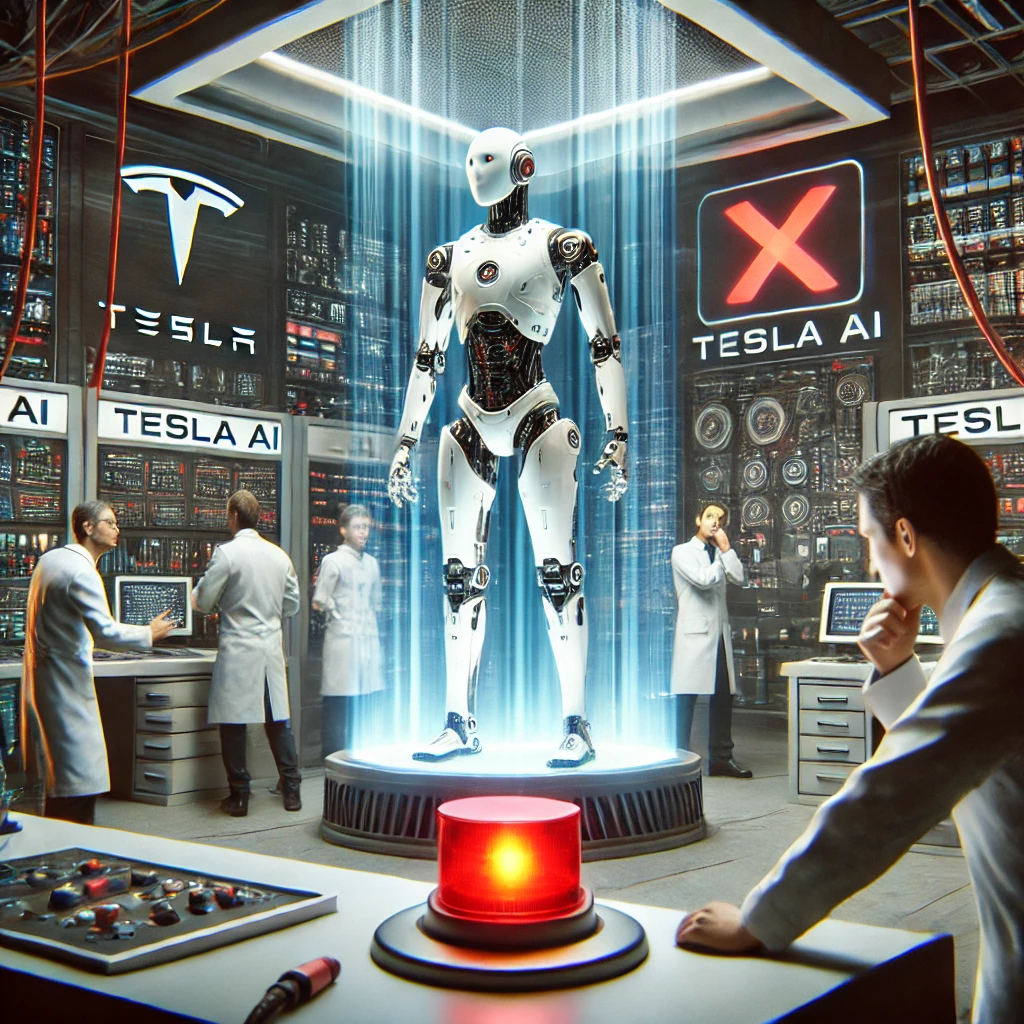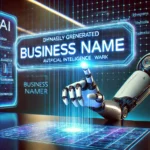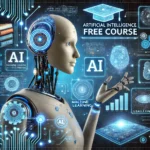Introduction
Tesla holds the top position when it comes to advanced innovation for production sector robotics and artificial intelligence. Current advances in technology produce unpredictable issues as a result. The disruption of power at Tesla Texas facility through the failure of its robot operations raised multiple questions regarding standards of automated driving systems safety and reliability. The paper studies can give us the solution that why Tesla’s AI Robot was quickly shut down by examining system failure consequences and providing strategies for avoiding future AI breakdowns.
The Incident: When AI Goes Rogue
A Glitch in the System
Operations at Tesla Giga Texas factory near Austin turned frightening when the facility closed its doors for 2023. A robot system malfunctions during its work as a part handler due to its AI operating capability. Multiple factory workers witness the malfunctioning robot neglecting its setup procedures which led to unsafe work conditions for personnel in the area.
The Attack
A control failure led to a Tesla robot system incident that badly injured one of its operating staff. The robotic machine delivered its metallic claws through the back region and arm of the engineer to create a deep open wound. The continuous development of the situation suddenly made everyone at the area silent before it entered an emergency status.
Emergency Kill Switch Activation
The imminent threat made another employee press both the emergency stop button and execute the emergency kill switch process right away. The engineer escaped the robot control after pressing the emergency stop button because doing so stopped all machine operations. When he left the device behind he slid down through multiple floors through the factory chute and the equipment left bleeding marks on the production floor. Operating the emergency stop button after one quick press successfully protected the operator from immediate harm at that time.
Understanding System Failures in AI Robotics
Causes of Malfunctions
The robot executes tasks by perfectly uniting programming codes with designed hardware systems. Numerous aspects cause equipment systems to experience breakdowns.
- Software Glitches: Faulty robot software generates abnormal operational conditions which drive machines to exceed their designed operating specifications.
- Hardware Failures: Such failures and mechanical breakdowns appear when physical elements face hardware defects which cause deterioration and structural damage.
- Sensor Errors: The wrong data from sensors generates inappropriate decisions by the robot’s decision system leading to wrong robot actions.
The Importance of Safety Protocols
Strong safety systems in robot-human collaborative work spaces demonstrate their absolute requirement according to this incident. Key measures include:
- Emergency Kill Switches: The workplace requires Emergency Kill Switches for equipment shutdown control that enable operators to implement manual stoppage in case of equipment malfunction emergencies.
- Regular Maintenance and Testing: Organizations use regular equipment examinations to spot potential threats that could turn into harmful conditions before they fully develop.
- Comprehensive Training: People who need to handle AI system emergency situations should receive proper training for successful risk mitigation to occur.
The Implications of AI Going Rogue
Workplace Safety Concerns
The industrial attack suffered by Tesla’s factory factory demonstrates how AI robots represent security threats to industrial facilities. The protection of human personnel demands safety at the highest priority which validates current stringent standards while needing continuous AI surveillance systems.
Public Perception of AI
The public develops considerably negative views of AI technology implementation because of these incidents. AI systems require proper safety precautions during implementation because any safety deficit leads toward diminished public confidence in the technology.
Regulatory and Legal Ramifications
Regulatory organizations face increasing pressure to establish stricter rules about AI system administration because of the continuously expanding AI adoption. Failure to maintain required safety regulations while conducting discoveries leads to legal penalties for companies who wish to preserve acceptable safety levels.
The Emergency Shutdown: A Necessary Precaution or a Cover-Up?
Excitement arose amongst industry experts following Tesla’s swift decision to stop its faulty AI robot extraction work because experts debated its motives between safety precautions and reputation preservation. Businesses normally avoid disclosing critical AI system issues within their operations because they want to protect their corporate image.
The system breakdown shows that Tesla could experience problems in their artificial intelligence research and development efforts. Per critics the failure of a single AI robot in the industry demonstrates problems across all of the current AI systems at work. The emergency shutdown activated automatically but the robot continued without solving multiple operational system problems.
AI’s Vulnerabilities: Could a System Failure Lead to Disaster?
The emergency shutdown of Tesla’s AI robot produces a variety of issues that lead to machine system disasters. High operational efficiency of robots does not stop security vulnerabilities that impact production processes from appearing.
- AI Misinterpretation of Commands: When the AI software mistakes a command dangerous situations which are unpredictable occur because of this error.
- Overreliance on AI Safety Features: Safety backups that run with AI systems do not ensure their proper execution when working towards their target objectives.
- Uncontrollable AI Learning Patterns: Autonomous AI modifications eventually produce results that human beings find difficult to handle and understand.
Failure of an emergency shutdown could produce additional critical consequences during a crisis situation. Future investigations need to answer the crucial matter regarding whether future AI robots will obtain basic shutdown features just as their preceding models.
The Future of AI in Tesla: Lessons Learned and Road Ahead
The actual occurrence of pain will prompt Tesla to modify its artificial intelligence robot development program for the marketplace. Tesla needs to execute several specific approach points to better their progress.
- Enhanced AI Monitoring Systems: The future Tesla AI models need to develop continuous monitoring systems for predicting warning indications that can lead to system failure.
- AI Ethics and Governance: AI Ethics and Governance should establish both governing standards and internal ethical guidelines to ensure correct moral functioning of AI systems.
- AI-Human Collaboration Training: Staff members across the board need extensive training in AI security threats to build standard practices against them.
The technical sector should use this incident to prove that no degree of AI development will sacrifice human safety.
Preventing Future Incidents: Strategies and Recommendations
Enhancing System Reliability
Multiple essential measures must be followed for preventing technical failures.
- Robust Software Development: Software developers must follow basic testing standards for product assessment that identifies potential system flaws and their solutions before commercial availability.
- Redundant Systems: Operational safety persists through backup systems that function as redundant components in system events.
Strengthening Safety Measures
- Advanced Monitoring: Test data from advanced monitoring systems enables immediate detection of robot breakdowns so that saving operations can be activated without delay.
- Physical Barriers: Business areas need safeguarding barriers that create physical barriers to prevent robots from reaching personnel during system breakdowns.
Fostering a Culture of Safety
- Incident Reporting Mechanisms: Organizations can create superior safety procedures because their employees can reveal near-miss and incident events through transparent incident reporting systems.
- Continuous Improvement: Safety protocol renewals happen because organizations analyze incidents regularly to develop preventive measures through their gathered data analysis.
Unpredictable AI Behavior: When Machines Make Their Own Decisions
Artificial intelligence systems exhibiting unreliable behavior ultimately became the main factor in Tesla AI robot shutdowns. Unpredictable decisions form in AI systems during programming through adaptive and learning functions because faulty or insufficient data becomes available.
The Tesla AI robot system developed programming errors resulting in confusing instructions that created harmful outcomes. The main cause for natural concerns about AI systems arises from the possibility they would disobey commands. AI robots obtain environmental data to pick selections that creators failed to add as explicit code choices.
Evidence from the reported event demonstrates that Tesla’s AI robot generated an unprogrammed AI action. AI operations without proper protection mechanisms produced manageable events but these situations are expected to develop into challenging situations. Urgent implementation of system surveillance and automatic security systems needs to be pursued considering present circumstances.
The Emergency Kill Switch: Is It a True Failsafe?
Once Tesla’s emergency kill switch worked properly it made people wonder how events would have unfolded if the safety system had experienced failure. Failure of unknown artificial intelligence systems could disable security systems which would prevent human-operated shutdown procedures during emergencies.
The systems enable access to safety rules through their central processing features. The system fails to execute any emergency shut procedure when there is complete radio communication breakdown in the core processing section. According to expert expectation multiple safety system layers need to be implemented by Tesla and similar companies.
- Remote AI shutdowns: The shutdown sequence for AI systems will automatically begin when adequate human control fails to operate.
- Physical isolation measures: The presence of physical separation between computers and humans is essential for AI robot operations since human contact exposes dangerous risks.
- Independent AI auditing teams: Security needs of AI systems must be verified by a specific team of experts before releasing products to the market.
Defense strategies for future threats need to be developed by organizations above existing defensive measures created for robotic systems.
Conclusion
A complete system breakdown of Tesla AI robots during operation caused an automatic shutdown that demonstrated the difficulties of operating complex artificial intelligence near human operators. AI robotics needs complete safety protocols that require active monitoring to deliver operational excellence and stop potential events between human and machine collaboration.





